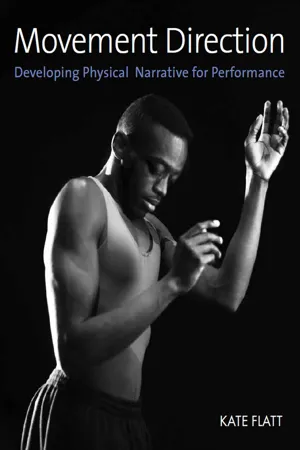
- 160 pages
- English
- ePUB (mobile friendly)
- Available on iOS & Android
About this book
Movement Direction in contemporary theatre production is increasingly recognised and valued as a significant component of the expressive art of bodily communication in live performance. From scene changes, to character development, to dance sequences, movement direction underpins all that we see on stage and screen. This comprehensive book traces the creativity, skills, and knowledge essential to the movement director employed within the context of performance making. Key concepts are combined with insightful accounts from experienced practitioners and supported by creative tasks aimed to develop curiosity, skill, and deeper understanding of this valuable craft. Topics covered include: what is Movement Direction?; the expressive body; the actor's process; movement in time and space;? working with dance forms; context, research, and planning; Movement Direction for plays and opera and finally, working with directors.
Frequently asked questions
- Essential is ideal for learners and professionals who enjoy exploring a wide range of subjects. Access the Essential Library with 800,000+ trusted titles and best-sellers across business, personal growth, and the humanities. Includes unlimited reading time and Standard Read Aloud voice.
- Complete: Perfect for advanced learners and researchers needing full, unrestricted access. Unlock 1.4M+ books across hundreds of subjects, including academic and specialized titles. The Complete Plan also includes advanced features like Premium Read Aloud and Research Assistant.
Please note we cannot support devices running on iOS 13 and Android 7 or earlier. Learn more about using the app.
Information
Table of contents
- Cover
- Halftitle
- Title
- Copyright
- Contents
- Acknowledgements
- Introduction
- 1. What is Movement Direction?
- 2. The Professional Context
- 3. The Expressive Body
- 4. Movement in Space and Time
- 5. Working with Dance Forms
- 6. Movement Direction for a Play
- 7. Movement Direction in Opera
- 8. Movement Direction Applied in Other Contexts
- 9. Working in Collaboration
- Conclusion
- Appendix I Professional Development, Support and Further Study
- Appendix II Contributors’ Biographies
- Glossary
- Further Reading
- Index